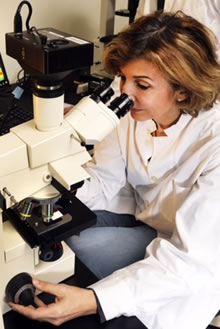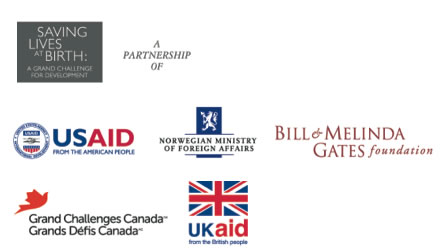
Researchers at Emory University and the Georgia Institute of Technology are investigating the benefits of a microneedle patch that will enable minimally trained personnel to deliver influenza and tetanus toxoid vaccines to the skin of pregnant women in developing countries.
Ioanna Skountzou, MD, PhD, assistant professor of microbiology and immunology at Emory University School of Medicine, is leading the project with a new $250,000, two-year grant from Saving Lives at Birth, a partnership launched in 2011 that includes the U.S. Agency for International Development (USAID), the Government of Norway, the Bill and Melinda Gates Foundation, Grand Challenges Canada (funded by the government of Canada) and the United Kingdom’s Department for International Development.
The seed grants were awarded to 18 recipients out of 53 finalists and 400 applications in a global call for innovative ideas to save the lives of mothers and newborns in developing countries.
"Despite the World Health Organization’s recommendation that pregnant women should be vaccinated against influenza and tetanus, only 50 percent of pregnant women receive flu vaccinations worldwide and reduction of maternal and newborn death rates in developing countries is far below the Millennium Development goals," says Skountzou.
 | |
| Ioanna Skountzou is leading the project. |
"Seven percent of newborns and 30,000 pregnant women in Sub-Saharan countries are dying each year due to tetanus infections. We are hoping these microneedle patches will save millions of lives of mothers and babies before and after birth."
Influenza infection-related complications in fetuses and newborns are associated with increased risk of miscarriage, stillbirth, neonatal death, preterm birth and low birth weight, accounting for more than 100,000 neonatal deaths, according to the World Health Organization. Pregnant women also are at risk from influenza infections during the second and third trimester of pregnancy, resulting in increased frequency of cardiopulmonary complications, disease, and death compared to non-pregnant women.
The patches are designed to overcome major hurdles for effective vaccination coverage in developing countries: shortage of trained health care personnel, safety and supply problems with syringes and needles, refrigeration of vaccine, and lack of access in remote areas.
The microneedle patches are applied to the skin like a small adhesive bandage and they dissolve and release the vaccine within minutes. Vaccination with the patches is easy and requires minimal training. Because the patches eliminate hypodermic needles, they reduce the risk of accidental infection by blood-borne pathogens. The small size of the patches makes them simple to deliver to remote locations, and they can be transported and stored at room temperature for prolonged periods of time.
Skountzou is a member of the NIH-supported Influenza Pathogenesis and Immunology Research Center. In this effort she is joining forces with Mark Prausnitz, PhD, a Regents’ Professor at Georgia Tech and Richard Compans, PhD, a Microbiology and Immunology Professor at Emory University.
Skountzou and her collaborators hope to generate sufficient data to apply for a transition grant that will allow them and potential partners to conduct clinical trials in Asia or sub-Saharan countries.
Saving Lives at Birth is currently in its third award round and has funded 39 innovations to date, helping to address the 150,000 maternal deaths, 1.6 million neonatal deaths, and 1.2 million stillbirths that occur each year. For more information about Saving Lives at Birth, see: www.savinglivesatbirth.net.

